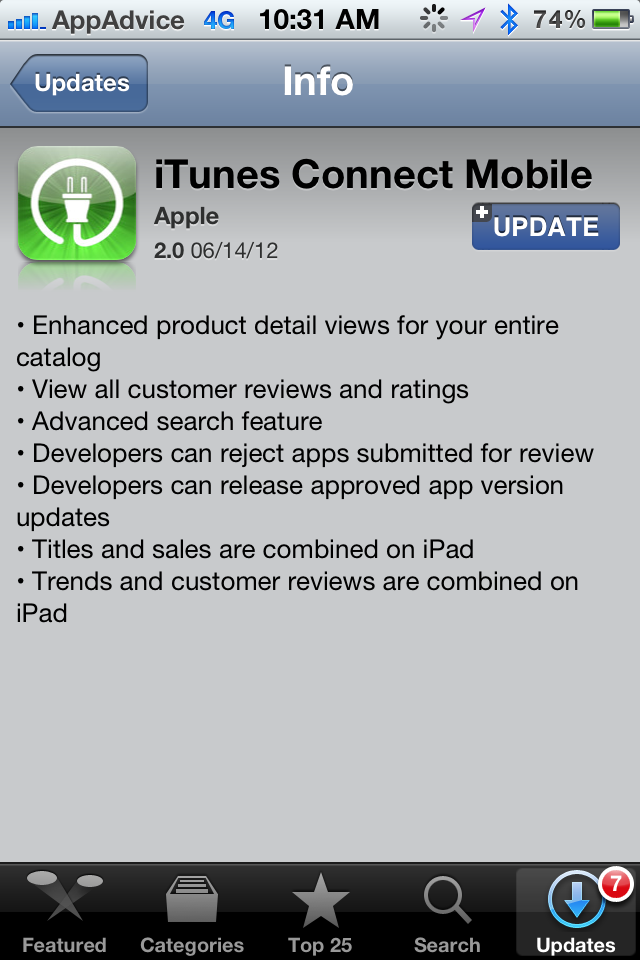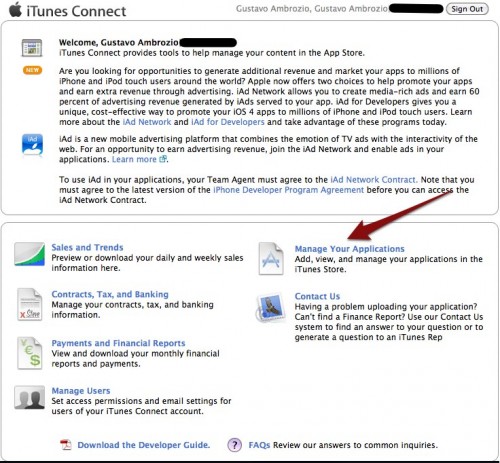

- Itunes connect application loader install#
- Itunes connect application loader full#
- Itunes connect application loader code#
- Itunes connect application loader free#
Creating a Distribution Profileįinally, click on " Distribution" under " Provisioning Profiles" in the sidebar and – once again – click the " +" button.
Itunes connect application loader install#
Once done, double-click the downloaded certificate file to install it in your local Key Chain, where Elements (and Xcode) will automatically find it. These include running the Key Chain Access tool on our Mac, creating a Request, uploading that request and then downloading the generated certificate. Select the " App Store and Ad Hoc" option and press Continue, and then follow the instructions displayed to create your Certificate. Next, click on the " Production link under " Certificates", and once again click the small " +" button in the top right, this time to add a new certificate.

Once you're happy with your setup, click " Continue" to save your App ID. Some features (such as Push Notifications) are only available for apps with explicit IDs.

Near the bottom, you can also enable certain platform services from your App, such as iCloud support, HealthKit access, and the like.
Itunes connect application loader full#
An explicit ID contains a full bundle ID that will match exactly one app, while a wildcard ID ends with. " ").You can choose for the Bundle ID to be "explicit" or "wildcard". You will be asked to provide a description (this is for your internal use, to recognize the ID later), as well a Bundle ID, which should be in reverse domain notation (e.g. Click the " +" button at the top right to create a new ID. You will see a new view with " App IDs" active on the left, and a list of already configured IDs on the right. To do so, click in the " Identifiers" link underneath the " iOS Apps" headline on the page mentioned above. If you decide to create a dedicated App ID for your app, you will most likely do this early in the development process, and not just shortly before submission. Creating an App IDĪs mentioned before, this step is optional, but recommended. If you have been using the default App ID, you might also want to consider setting up a dedicated App ID for your application, with a unique reverse-name ID string.Īll of these tasks are performed on the Certificates, Identifiers & Profiles page of Apple's developer portal, which has become a bit tricky to find a link to recently, but is available via the link above, and also from Fire's " Tools|Cocoa" menu. Maybe you set these up yourself, or maybe you have let Xcode create them for you when you first connected your device.įor App Store distribution, your first step is to create a dedicated Distribution Profile and a Distribution Certificate. For your local development, you have been using a Development Profile and a Development Certificate to build the app for your devices.
Itunes connect application loader code#
Since you have been working and testing your iOS app, you will already be familiar with the concepts of App IDs, Provisioning Profiles, as well as Code Signing Certificates. Refer to Apple's App Distribution Guide as the official documentation for this process. In principle, these are the same steps when you use Elements as those performed by developers using Apple's own Xcode IDE, so any tutorials or information you find about App Store submissions online will more or less apply to you as an Elements developer, as well.
Itunes connect application loader free#
The final goal of all your work with an iOS app is probably to submit it to the iOS App Store for distribution – whether it's for sale or as a free app.ĭoing so is relatively straight-forward, but does involve a few steps worth outlining here.


 0 kommentar(er)
0 kommentar(er)
